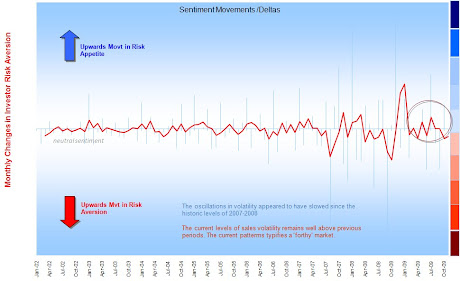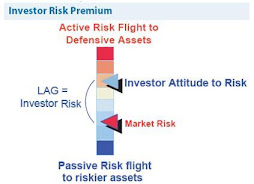E.g. a young adventurous investor may still consider cashing profits and rotating out of equities at the height of a bull market. Often few providers make provision for this basic need; expecting advisers to pick up the 'switch' at the annual review.. but what if markets inflate mid-way and the investor or adviser don't pick it up? Investors are constantly influenced, expectations for upside and downside often change and rarely symmetrical.. sitting above 6000 in the footsie is quite differet to being below 4000 as we know.Firstly each contribution is in effect a distinct investment - rolling them up into one 'horizon' only makes sense in terms of convenience. In reality each contribution has its own buy and sell price points (depending on the goals of the investor). In my presentation on 'horizons' ('Bull versus Bear Investing; versus Herding') I showed the impact of buying and selling at the wrong points in the market. This is no bad thing but it really does make looking at aggregated positions a bit of a farce.
Secondly cost-averaging doesn't neccessarily reduce risk anyway; it reduces immediate overall exposure, yes, as the size of investment is smaller but if you considered it a level playing field then where is the equivalent sum being held..? If the answer is that there is no single premium to invest and only a regular premium then there is no risk comparison to make. On the other hand if the sum is being held in cash or property; or another investment, then it carries its own set of risks already - whether you transfer-in or phase out - it still involves the exchange of one set of risks for another..
Lastly - worth remembering what sorts of risks you're being confronted with> Is it just market risk, concentration of portfolio risk, exposure to price volatility, credit risk, company risk, inflation risk, liquidity risk or indeed currency risk to name a few. Investing a lump sum may increase risk in some but not in others (E.g. buying at a lower point in the market for recovery or buying a US Equity Fund when the £ is strong and selling when weak)..
A key aspect of cost-averaging then is timing. On the upside conventional wisdom assumes volatility diminishes over the square root of time. This is due to the cumulative effect of returns (the so-called law of averages). However if you make seperate tranches then you, to some degree, reduce this effect and instead replace it with a form of diversification of different holding periods. There is no guarantee which method poses more risk overall, especially if you take into consideration 'extreme' volatility.
Therefore I don't want to blow up cost-averaging, as I think it at least makes people consider 'diversification' but I all too often saw it not only minimize downside but also cap upside.. if the contributions are blindly rolled over then the benefits become limited. However if used more tactically to roll in and out of positions (based on set targets) then great. Buying into troughs and phasing out of bull markets.
Be warned - regular contributions need more maintenance than a typical single premium strategy.




No comments:
Post a Comment
Note: only a member of this blog may post a comment.